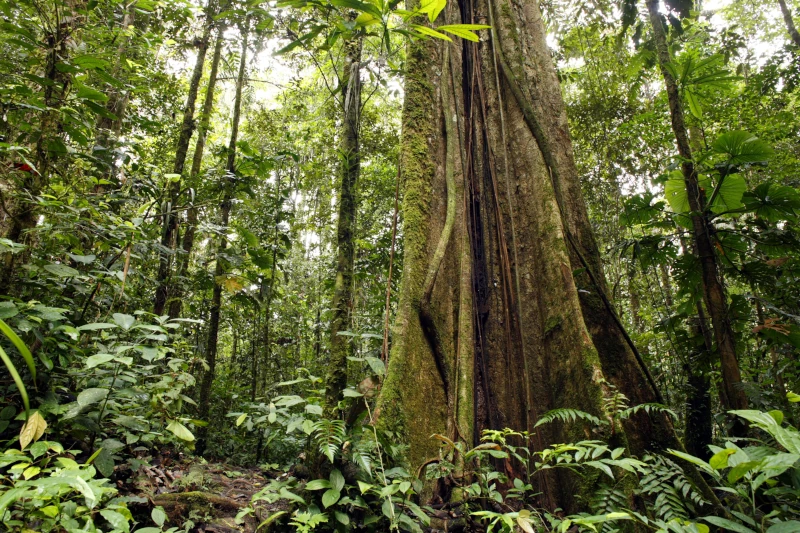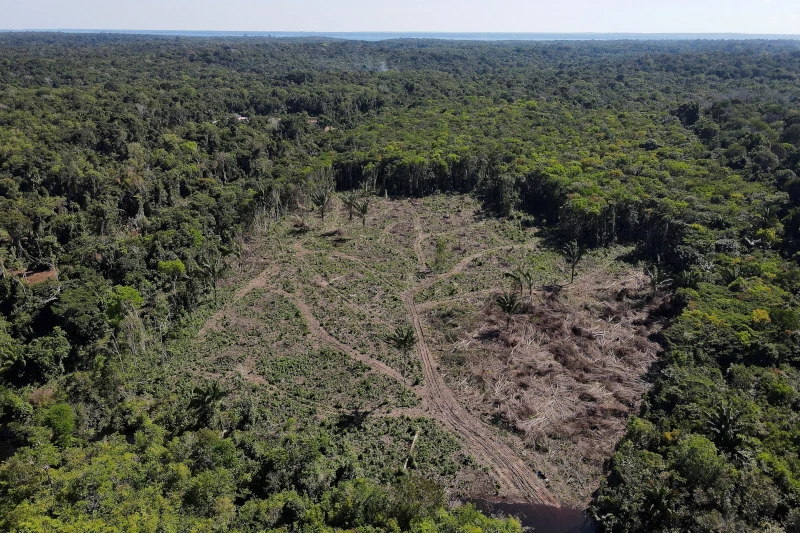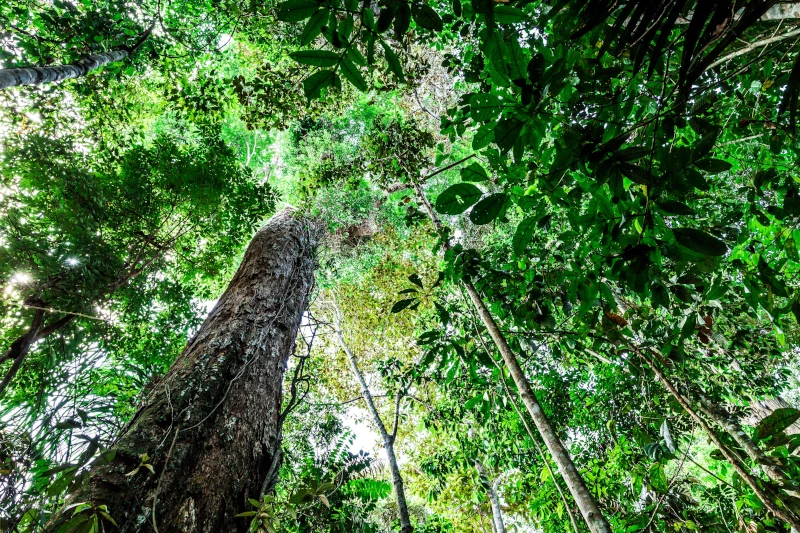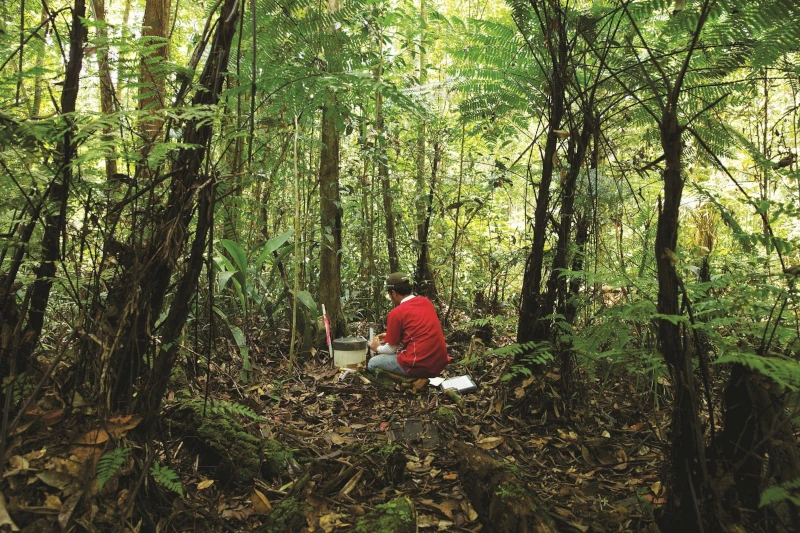Rainforests are often referred to as the lungs of our planet. They are crucial for producing approximately 20% of the world’s oxygen and serve as the habitat for an extraordinary array of biodiversity. These rich and complex ecosystems not only sustain a myriad of life forms but also support vital ecological processes that benefit the entire globe. For those planning to explore these green marvels or simply wishing to understand their significance, this guide is your go-to resource.
Rainforests are home to countless tree species, each playing a unique role in maintaining ecological balance. These trees form a multi-layered structure, ranging from towering canopy trees to the shaded understory and the dense forest floor. Each layer supports distinct habitats and species, creating a complex web of life that is interdependent and finely tuned.
The canopy, often situated 60 to 90 feet above the forest floor, is where the tallest trees reside, basking in abundant sunlight. Beneath the canopy, the understory provides a cooler, shaded environment where smaller trees and shrubs thrive. The forest floor, though less illuminated, is rich in decomposing organic material, nurturing a diverse array of plants, insects, and microorganisms. This vertical stratification of habitats not only maximizes the use of resources but also enhances biodiversity.

Let’s dive into the wonders of rainforest trees and why they are vital to our ecosystem. The Amazon is the largest tropical rainforest, boasting a diversity of tree species unparalleled anywhere else on Earth. Some notable examples include the Kapok tree, Brazil nut tree, and the rubber tree. These giants form the canopy, the upper layer of the rainforest, where sunlight is abundant. They provide essential ecosystem services, such as habitat for countless species and resources for indigenous peoples.
In addition to their ecological roles, these trees have profound economic and cultural significance. The Brazil nut tree, for instance, is a cornerstone of local economies, providing both food and livelihood. The rubber tree, on the other hand, has historically transformed industries worldwide. Understanding these trees’ roles can highlight the intricate connections between natural ecosystems and human societies.
Banana trees grow well in tropical rainforests. They are more than just fruit trees, they help the whole ecosystem. Their large leaves give shelter, and their fruit feeds many animals.
Banana trees also help the soil. They keep it strong and full of nutrients. This helps other plants and animals nearby.
For both animals and people, banana trees are an important food source. Growing bananas is also a big part of farming in tropical areas. It supports local jobs and global trade.Banana trees show how one plant can help nature and people at the same time.
Mango trees are another important species found in Asian rainforests. These trees are not only a source of delicious fruit but also offer habitat and food for various bird and insect species. Their presence enhances the structural diversity of the forest and provides crucial ecological services, including carbon sequestration and soil enrichment.
The mango tree’s cultural significance is also profound, featuring prominently in the diets and traditions of many Asian communities. The tree’s wood is valued for its versatility, used in everything from furniture to traditional crafts. Thus, mango trees in rainforests are pivotal not only for ecological balance but also for cultural heritage and economic stability.
The flora and fauna of rainforests are incredibly diverse, with numerous species still undiscovered. This biodiversity is essential for maintaining ecological balance and supporting life on Earth. Rainforest ecosystems are characterized by a complex interplay of species interactions, where each organism plays a specific role, contributing to the overall health and functionality of the environment.
The dense vegetation provides habitat and sustenance for countless animal species, from insects to large mammals. The continuous discovery of new species in rainforests highlights their richness and the importance of preserving these habitats. The intricate relationships between plants and animals in rainforests demonstrate the resilience and adaptability of life in these environments. There lays the big importance to protect important endangered species like: jaguars, sloths, giant otters, Tapirs just o name a few.

Tree frogs are one of the many fascinating creatures that inhabit rainforests. They rely on the moist, lush environment to thrive. These small amphibians are crucial for pest control and serve as indicators of environmental health. Their presence often signifies a healthy, balanced ecosystem, making them valuable for ecological studies and conservation efforts.
Tree frogs also exhibit a remarkable array of adaptations, such as vibrant coloration and unique vocalizations, which aid in communication and predator avoidance. Their life cycle, which includes both aquatic and terrestrial stages, highlights the interconnectedness of rainforest habitats. By understanding tree frogs’ ecological roles, we can gain insights into the broader health of rainforest ecosystems.
Rainforests are hotspots of biodiversity, supporting about 50% of the world’s plant and animal species. The complex interplay between different species creates a balanced ecosystem where each organism plays a role. This biodiversity is not only a testament to the evolutionary processes that have shaped life on Earth but also a critical component of global ecological stability.
The diversity found in rainforests provides numerous ecosystem services, such as pollination, seed dispersal, and nutrient cycling. Moreover, the genetic variety within these ecosystems holds potential for medical and scientific discoveries. Preserve the Amazon is essential for sustaining these services and ensuring the resilience of global ecosystems in the face of environmental changes.
The roots of rainforest trees help to stabilize soil, preventing erosion. Additionally, when leaves and branches fall and decompose, they enrich the soil with nutrients, supporting new plant growth. This nutrient cycling is fundamental to the productivity and sustainability of rainforest ecosystems, fostering diverse plant communities that support a wide range of wildlife.
The dense root networks of rainforest trees also enhance soil structure, improving water retention and reducing the risk of landslides. By maintaining soil health, these trees contribute to the resilience of rainforest ecosystems, enabling them to recover from natural disturbances and human-induced pressures. Their role in soil conservation is essential for sustaining the ecological integrity of rainforests.
Rainforest trees face numerous threats, primarily from human activities. Understanding these threats is crucial for effective conservation efforts. The loss of rainforest trees not only impacts biodiversity but also undermines the essential ecosystem services they provide, such as climate regulation and water cycle maintenance.
The encroachment of human activities into rainforest areas has led to habitat fragmentation, reducing the ability of ecosystems to function optimally. This fragmentation threatens the survival of countless species, many of which are endemic to specific rainforest regions. Acknowledging and addressing these threats is essential for preserving the ecological and cultural value of rainforests.

Deforestation for agriculture, logging, and urban expansion poses the greatest threat to rainforest trees. This not only reduces biodiversity but also disrupts the ecosystem services that rainforests provide. The conversion of tropical forest land to agriculture or urban areas leads to habitat loss and fragmentation, threatening the survival of many species and compromising ecosystem resilience.
Moreover, Deforestation risk in the Amazon basin contributes to climate change by releasing stored carbon dioxide into the atmosphere, exacerbating global warming. The loss of forest cover also disrupts local climate patterns, leading to reduced rainfall and increased temperatures. Addressing deforestation through sustainable land management practices is vital for preserving the ecological integrity of rainforests.
Climate change affects rainfall patterns and temperature, which can alter the delicate balance of rainforest ecosystems. This impacts tree growth and survival, with cascading effects on the entire ecosystem. As temperatures rise and weather patterns become more erratic, rainforests face increasing challenges in maintaining their biodiversity and ecological functions.
The vulnerability of rainforest ecosystems to climate change highlights the need for adaptive conservation strategies. Protecting these ecosystems requires a comprehensive approach that considers the impacts of climate change on species distributions, habitat connectivity, and ecological interactions. By integrating climate resilience into conservation efforts, we can enhance the ability of rainforests to withstand and adapt to changing conditions.
Saving rainforest trees means using the land in smart ways, planting new trees, and protecting the forest by law. These actions are very important to keep these ecosystems alive. Replanting trees helps bring back areas that were damaged and supports more plant and animal life. Laws that create protected zones and stop illegal mining also help keep the rainforest safe. Local communities can take part in protecting the forest and use its resources in a way that lasts. By backing these efforts, we help the rainforest survive and keep giving life to the planet.

Identifying rainforest tree species can be a rewarding experience. It involves observing leaf patterns, bark texture, and fruit or flower characteristics. Many field guides and apps are available to assist in identifying tree species. This practice not only enhances one’s appreciation of rainforest biodiverse paradise but also contributes to scientific knowledge and conservation efforts.
Tree identification can also aid in monitoring forest health and detecting changes in species composition due to environmental pressures. By engaging in citizen science projects and collaborating with researchers, individuals can actively participate in rainforest conservation. Understanding the diversity of tree species is a critical step in advocating for the protection and sustainable management of rainforest ecosystems.
Many organizations work hard to protect rainforests. They do this through education, community projects, and by speaking up for better laws. Supporting these groups helps keep rainforests safe for the future.
Their efforts often focus on restoring damaged land, involving local people, and fighting the causes of deforestation. Education is also key. By teaching others about the value of rainforests, these groups help more people care and take action.
Rainforests are important for nature and for people. By supporting conservation work, we help protect these vital forests and the life they support.

Rainforest trees are essential for the planet. They help keep the climate stable, protect wildlife, and support many living things. Whether you’re a traveler, photographer, or researcher, knowing their value makes your experience deeper and more meaningful.
If you’re visiting a rainforest or just learning about it, understanding the importance of trees is the first step to helping protect them. We all need to do our part to support tree conservation, choose eco-friendly habits, and spread the word about the dangers rainforests face. By caring for rainforest trees, we help build a healthier and stronger world for the future.